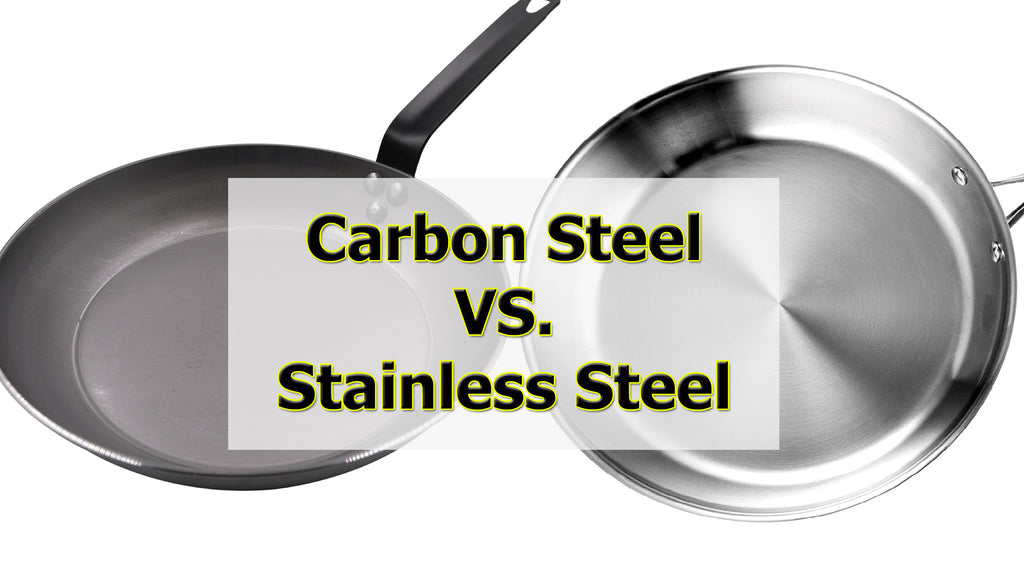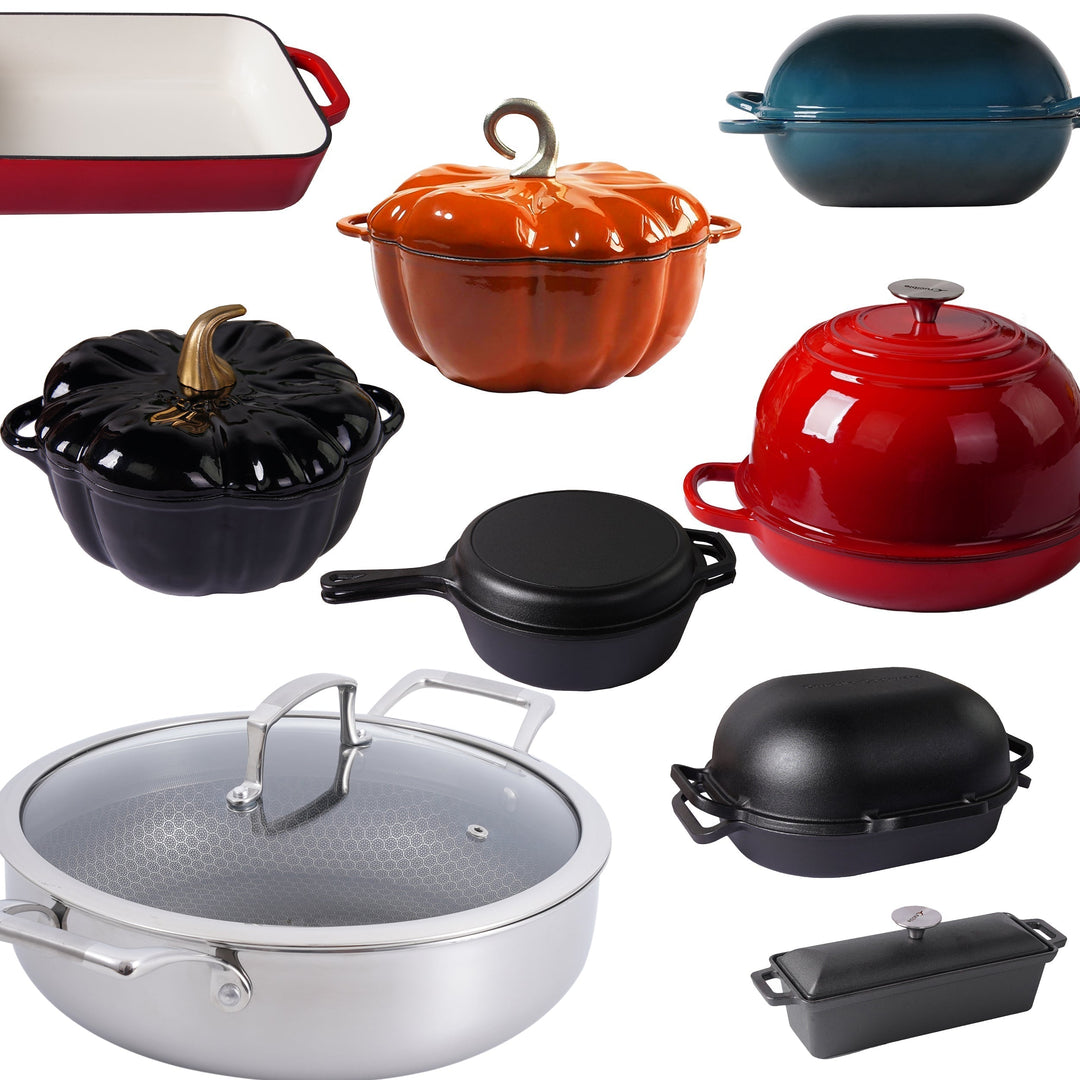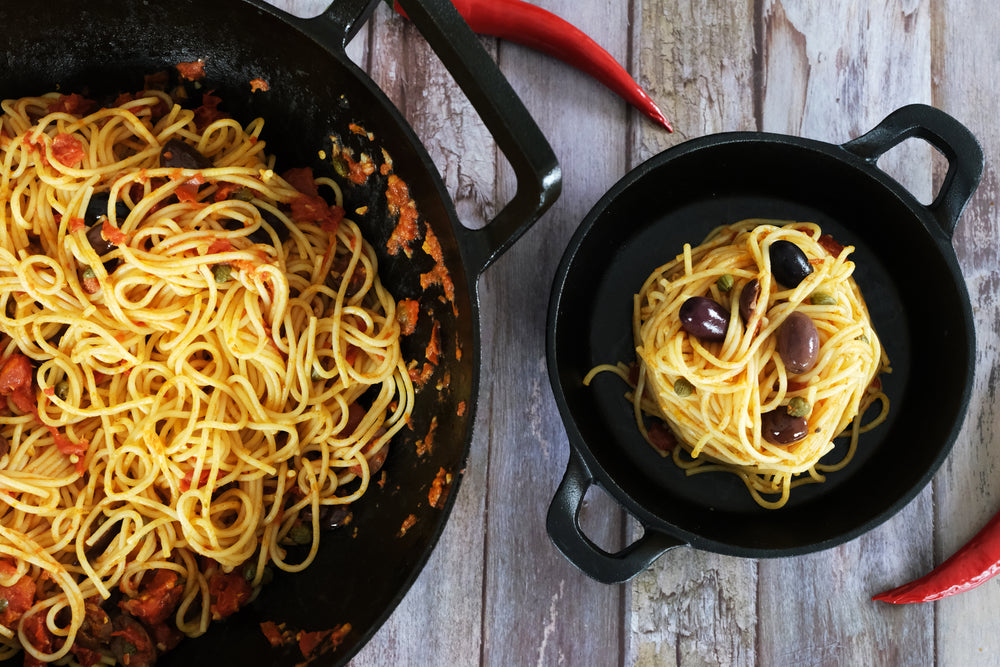Which Skillet is the best, Carbon Steel Pans or Stainless Steel Pans?

In this article we will not be the judge of which material is the best since what is best for you is according to your specific needs, however, we can provide the information you need to make an informed decision.
First, a short summary before we introduce our 7 points of comparison.
A carbon steel pan is made of iron and carbon while stainless steel must contain 11% chromium and up to seven additional metals, stainless steel has rust resistance (which must be created on carbon steel with seasoning) but also poorer heat conductivity.
Since carbon steel has natural non-stick properties when seasoned properly, you can use less oil or fat when cooking which makes it a healthier option and additionally better non-stick means easier to clean.
Carbon steel pans have better heat conductors and they can be heated to higher temperatures than stainless steel.

There are a number of properties to factor in when comparing carbon steel and stainless steel skillets, below are the most common ones.
- Corrosion resistance: Carbon steel pans are corrosion-resistant, but stainless steel is named as it is for a reason. The former will develop rust if not treated correctly, while the latter has rust protection due to the alloy mixture of the steel.
- Heat conductivity: Stainless steel pans do not perform well when it comes to heat conductivity unless supplemented with a metallic alloy like copper, which can help increase heat retention abilities. Heat distribution, on the other hand, is no problem for stainless steel pans. Carbon steel frying pans are much better heat conductors and thus will remain hot much longer when taken off the heat source, this is helpful so that the pan will not lose its heat when cold foods are added to it.
- Dishwasher safety: Carbon steel products call for handwashing since they can warp and rust dishwashers. Stainless steel pans, on the other hand, are dishwasher-safe.
- Stickiness: While neither carbon steel pans nor stainless steel pans are entirely non-stick cookware, carbon steel pans are the clear winner in this regard which means it’s easier for foods to stick to the cooking surface of a stainless-steel pan. Apply a non-stick coating to either type for the best results.
- Temperature tolerance: Both materials can handle high temperatures, however, food in a carbon steel skillet can take in more heat overall. A stainless steel pan can weaken if the bottom of the pan comes into contact with an exceptionally high heat source.
- Weight: Neither type of pan is as heavy as a cast-iron skillet, carbon steel pans are generally a little bit heavier to pick up than their stainless steel counterparts.
- Versatility: Both stainless steel and carbon steel are flexible and work well for many different types of recipes and cooking methods. Both pans are very versatile and both are oven-safe and function well on induction stovetops.

















Leave a comment